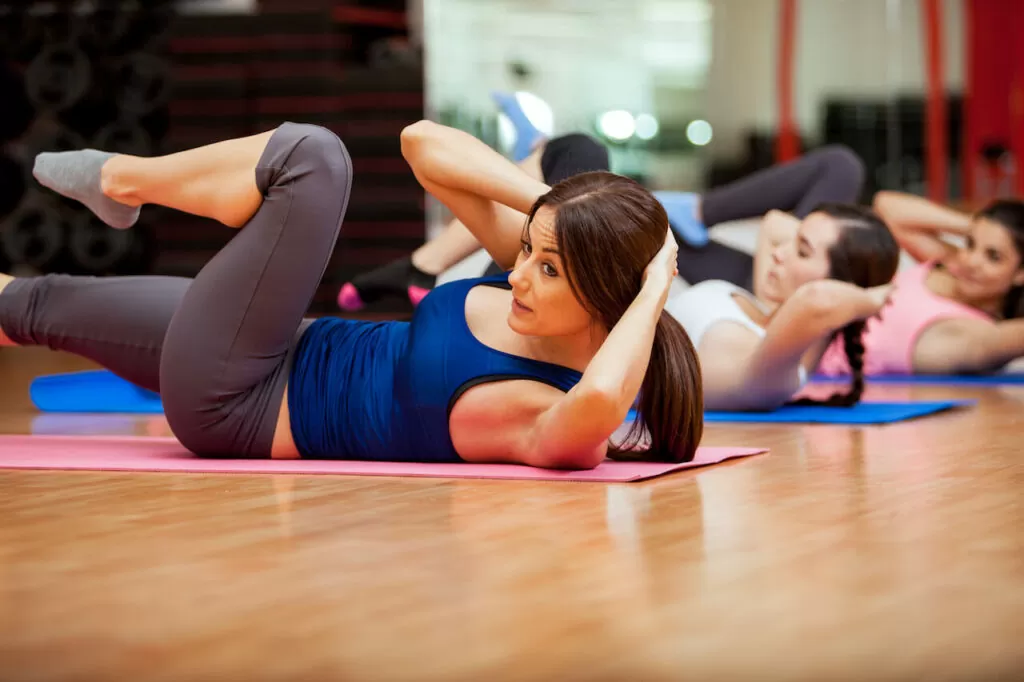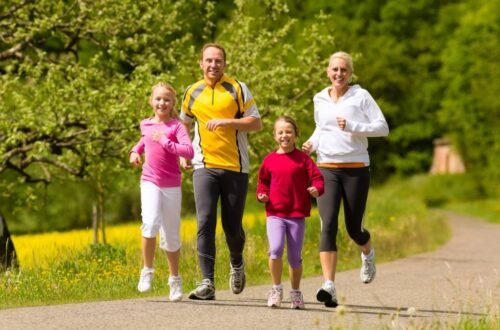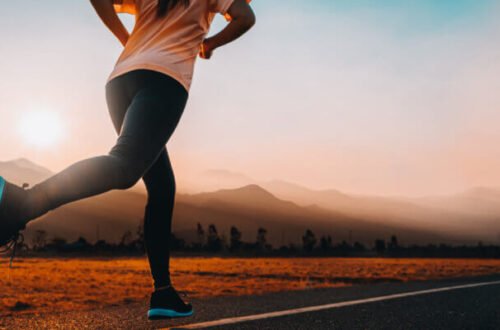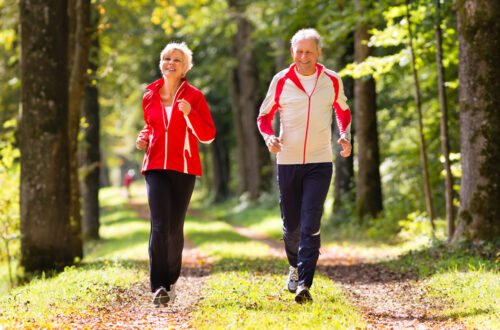Imagine waking up with a spring in your step, your mood lifted, and your body ready to tackle the day. That’s the magic of an active lifestyle. I learned this firsthand a few years ago when I swapped my couch-potato evenings for evening walks. The change wasn’t just physical—my stress melted, my sleep improved, and I felt more connected to the world around me. Physical activity isn’t about becoming a gym rat; it’s about finding joy in movement. In this article, we’ll explore five activities to kickstart your active lifestyle, backed by science, personal stories, and practical tips to keep you motivated.
Why an Active Lifestyle Matters
Regular physical activity is a game-changer for your health, reducing the risk of chronic diseases and boosting mental well-being. According to the World Health Organization, just 30 minutes of moderate activity daily can lower your risk of heart disease, diabetes, and even some cancers. It’s not just about living longer—it’s about living better.
The Science Behind Physical Activity
Physical activity gets your heart pumping, strengthens muscles, and releases endorphins—those feel-good chemicals that lift your mood. The CDC notes that adults who engage in 150 minutes of moderate exercise weekly have a lower risk of stroke and depression. It’s like a natural prescription for a healthier you.
How Inactivity Hurts You
Sitting too much is a silent health thief. A sedentary lifestyle increases your risk of obesity, type 2 diabetes, and even premature death by 20–30%, per WHO data. I remember feeling sluggish during my desk-job days—until I started moving, I didn’t realize how much energy I was missing.
Activity 1: Walking – The Simplest Way to Get Moving
Walking is the unsung hero of physical activity—accessible, free, and surprisingly powerful. A brisk 30-minute walk five days a week can transform your health, from lowering blood pressure to improving mood.
Benefits of Walking
Walking strengthens your heart, boosts circulation, and burns calories without stressing your joints. Studies show it can reduce the risk of hip fractures in older adults by up to 40%. Plus, it’s a great way to clear your head after a long day.
How to Start Walking
You don’t need fancy gear—just comfortable shoes and a safe route. Start with 10-minute walks and gradually increase your time. I began with short loops around my neighborhood, and now I crave my daily strolls like I crave coffee.
Where to Walk
Find local parks or trails through sites like AllTrails. Urban dwellers can map out quiet streets or join walking groups via Meetup. Nature trails add a mental health boost—greenery is a natural stress reliever.
| Walking Tips | Description |
|---|---|
| Pace Yourself | Aim for a brisk pace where you can talk but not sing. |
| Track Steps | Use a pedometer or app like Fitbit to aim for 6,000–10,000 steps daily. |
| Mix It Up | Vary routes to keep it interesting and explore new scenery. |
Activity 2: Cycling – Fun and Functional Fitness
Cycling is a low-impact way to build endurance and explore your surroundings. Whether it’s a leisurely ride or a commute to work, it’s a fantastic way to stay active. I started cycling to work last year, and it’s now my favorite part of the day.
Health Benefits of Cycling
Cycling improves cardiovascular health, strengthens leg muscles, and burns up to 500 calories per hour. It’s also gentler on knees than running, making it ideal for all ages. WHO highlights cycling as a key activity for reducing noncommunicable diseases.
Getting Started with Cycling
No bike? No problem. Check out bike-sharing programs in your city or invest in a budget-friendly model from brands like Trek. Start with short rides and use apps like Strava to track your progress.
Pros and Cons of Cycling
- Pros: Low-impact, eco-friendly, improves mood, great for commuting.
- Cons: Requires a bike, can be weather-dependent, safety concerns in traffic.
Activity 3: Yoga – Strength, Flexibility, and Zen
Yoga blends movement with mindfulness, offering a full-body workout that soothes the soul. I tried yoga during a stressful period, and it was like hitting a reset button for my mind and body.
Why Yoga Works
Yoga improves flexibility, builds core strength, and reduces stress by lowering cortisol levels. Research from the National Institutes of Health shows it can ease anxiety and improve sleep quality. It’s perfect for beginners and seasoned athletes alike.
Finding Yoga Classes
Look for local studios or online platforms like Yoga with Adriene. Many community centers offer free or low-cost classes. Apps like Down Dog let you practice at home with guided sessions.
Best Yoga Gear for Beginners
- Yoga Mat: A non-slip mat like the Liforme Yoga Mat ($140) for grip and comfort.
- Blocks: Gaiam Yoga Blocks ($20) for support in poses.
- Strap: Manduka Cotton Yoga Strap ($18) to aid flexibility.
Activity 4: Swimming – A Full-Body Workout
Swimming is a total-body exercise that’s easy on the joints and incredibly refreshing. I started swimming to rehab a knee injury, and it quickly became my go-to for staying fit without pain.
Health Perks of Swimming
Swimming boosts cardiovascular fitness, tones muscles, and burns about 400 calories per hour. It’s ideal for people with arthritis or injuries, as the water supports your body. The CDC notes it can also improve lung capacity.
Where to Swim
Check local community pools or gyms like YMCA for affordable access. Public lakes or beaches are great for open-water swimming if you’re near one. Always check safety guidelines before diving in.
Comparison: Swimming vs. Other Cardio
| Activity | Calories Burned/Hour | Joint Impact | Accessibility |
|---|---|---|---|
| Swimming | 400–600 | Low | Pools or lakes |
| Running | 600–800 | High | Anywhere |
| Cycling | 400–600 | Moderate | Bike required |
Activity 5: Strength Training – Build Muscle, Boost Confidence
Strength training isn’t just for bodybuilders—it’s for anyone who wants stronger bones and a faster metabolism. I started with bodyweight exercises at home, and the confidence boost was as rewarding as the physical gains.
Why Strength Training Matters
Lifting weights or doing bodyweight exercises strengthens muscles, improves bone density, and boosts metabolism. The CDC says it can reduce the risk of osteoporosis and falls in older adults. Plus, it makes everyday tasks easier.
How to Start Strength Training
Begin with bodyweight moves like push-ups or squats. For equipment, try resistance bands or dumbbells from brands like Bowflex. YouTube channels like Athlean-X offer free beginner workouts.
Pros and Cons of Strength Training
- Pros: Builds muscle, improves posture, boosts metabolism, enhances confidence.
- Cons: Risk of injury if done incorrectly, may require equipment, time-intensive initially.
People Also Ask (PAA)
What are the benefits of an active lifestyle?
An active lifestyle reduces the risk of chronic diseases like heart disease and diabetes, improves mental health, and enhances sleep quality. It also helps with weight management and boosts energy levels. Regular movement keeps your body and mind in top shape.
How much physical activity do I need daily?
Adults should aim for 150–300 minutes of moderate aerobic activity weekly, plus muscle-strengthening exercises twice a week, per CDC guidelines. Even 10-minute bursts of activity, like a brisk walk, can add up to big health benefits.
What are some fun ways to stay active?
Try activities like dancing, hiking, or team sports to make exercise enjoyable. Joining a local sports league or taking a dance class can add a social element. Apps like ClassPass help you explore fun fitness options.
Can physical activity improve mental health?
Yes, exercise releases endorphins, reducing stress and anxiety. Studies show that activities like yoga and walking can lower depression symptoms by up to 30%. Moving your body is a natural mood-lifter.
Overcoming Barriers to an Active Lifestyle
Starting can be tough, especially if you’re busy or feel out of shape. I get it—when I began, I worried I’d look silly at the gym. The key is starting small and finding activities you love. Let’s tackle common hurdles.
Time Constraints
Busy schedule? Break activity into 10-minute chunks—like a quick walk during lunch. Use apps like MyFitnessPal to schedule and track short workouts. Even small efforts add up over time.
Lack of Motivation
Find a workout buddy or join a community group to stay accountable. I teamed up with a friend for weekly hikes, and the laughter kept us going. Reward yourself with small treats, like new workout gear, for sticking to your goals.
Physical Limitations
If injuries or chronic conditions hold you back, try low-impact options like swimming or yoga. Consult a doctor or physical therapist for tailored advice. Adaptive programs at places like Special Olympics can help.
Best Tools for Staying Active
To make your active lifestyle stick, the right tools can make all the difference. Here are some top picks to keep you moving:
- Fitbit Charge 6 ($159): Tracks steps, heart rate, and sleep—perfect for monitoring progress.
- Strava App (Free): Great for runners and cyclists to track routes and connect with others.
- Bowflex SelectTech Dumbbells ($429): Adjustable weights for home strength training.
FAQ: Your Active Lifestyle Questions Answered
How does physical activity improve health?
Regular movement strengthens your heart, muscles, and bones while reducing the risk of chronic diseases. It also boosts mood and sleep quality. Aim for a mix of cardio and strength training for maximum benefits.
What’s the easiest way to start being active?
Start with walking—it’s free, requires no equipment, and can be done anywhere. Begin with 10-minute walks and gradually increase time. Apps like MapMyWalk can help you stay on track.
Can I stay active without a gym membership?
Absolutely! Activities like walking, bodyweight exercises, or yoga at home are effective and cost-free. YouTube offers free workouts, and local parks are great for outdoor activities.
How do I stay motivated to exercise regularly?
Set realistic goals, track progress with apps, and find activities you enjoy. Partnering with a friend or joining a fitness community can keep you accountable. Small rewards, like a new playlist, help too.
Is 30 minutes of exercise enough?
Yes, 30 minutes of moderate activity daily meets WHO recommendations for health benefits. Combine it with strength training twice a week for a well-rounded routine. Consistency is key.
Wrapping It Up: Your Journey to an Active Lifestyle
An active lifestyle isn’t about perfection—it’s about progress. Whether you’re walking through your neighborhood, cycling to work, or striking a yoga pose, every step counts. My own journey from sedentary to active taught me that small changes lead to big rewards. Pick one of these five activities, start today, and watch how movement transforms your life. What’s your first step going to be?





